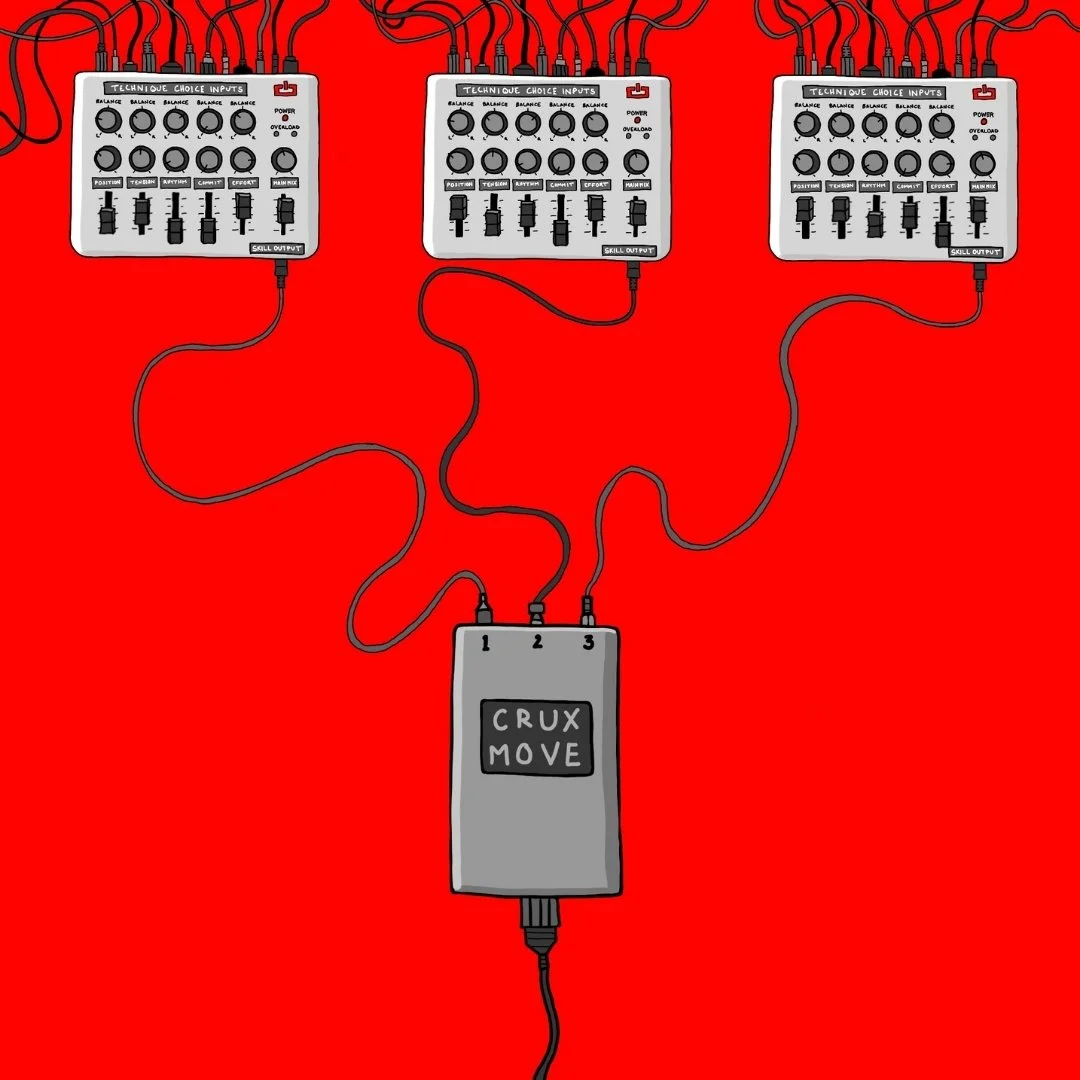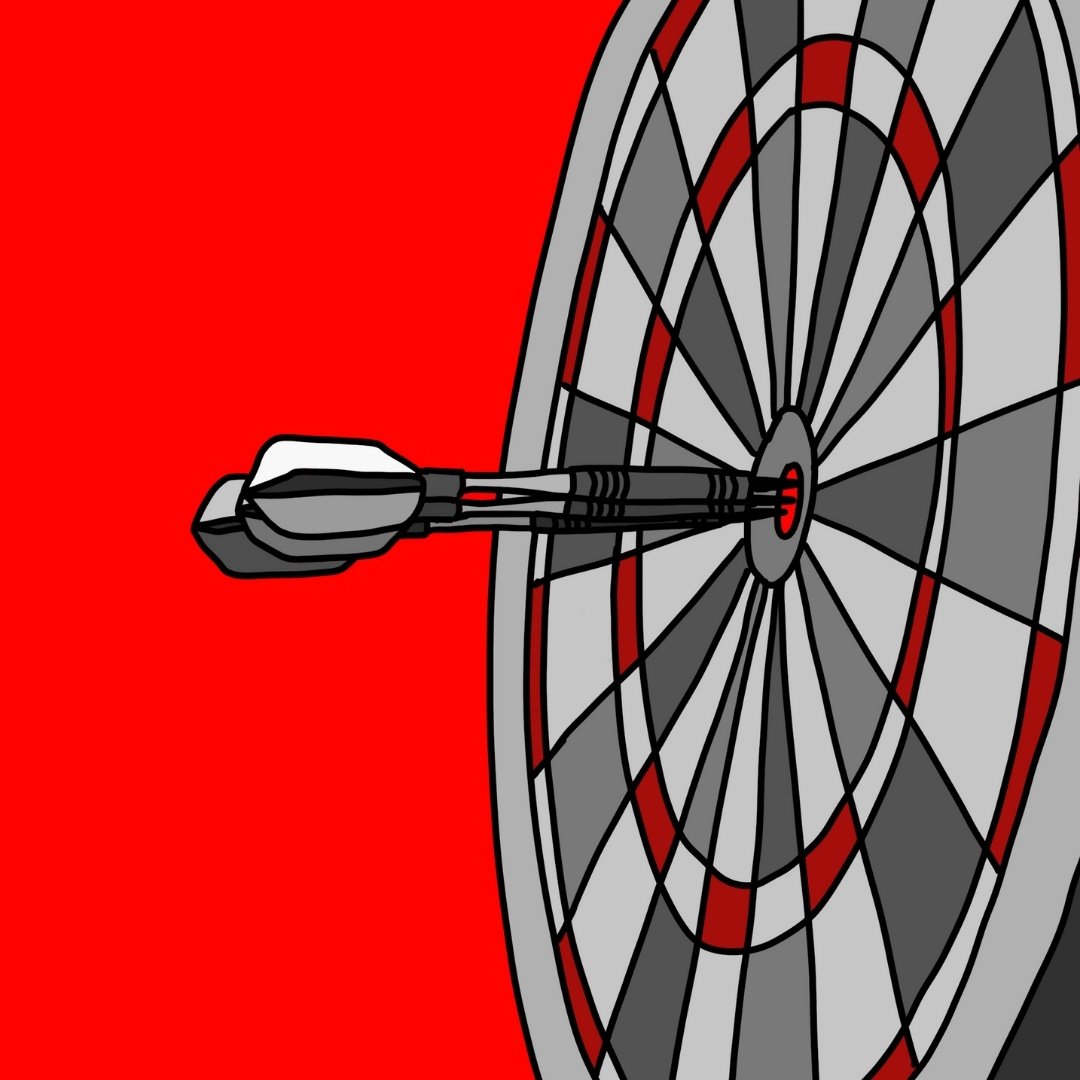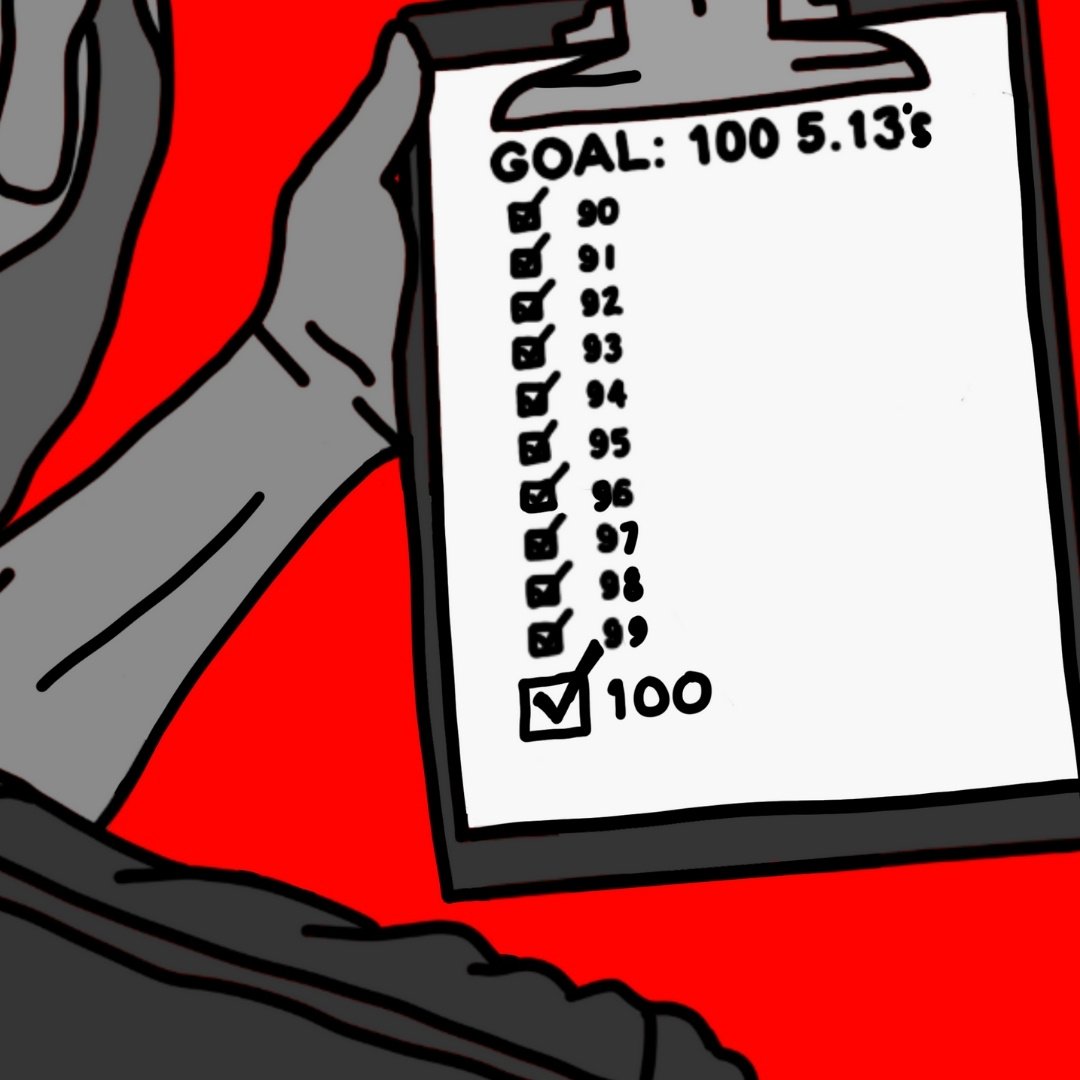Your Greatest Climbing Strength Is Holding You Back
You’re out for a day at the crag and come across a move you can’t do, so you find another way. You pull off of what everyone else recognizes only as a foothold, or use a kneebar nobody has found yet, or discover a clever sequence that allows you to circumvent the impossible move.
Good job. You’re leveraging what might be the most important skill in all of climbing: adaptability.
Even in an age where beta videos abound, every time we climb we’re measuring our action capabilities against a rock that affords us a wide variety of potential movement solutions. In exploring that solution space, we’re adapting our choreography to the task. And we send.
This is the root of performance.
Adaptability.
But there’s a problem. On its surface, during performance anyway, adaptability looks a lot like avoiding challenges. Compensating.
And if we’re always compensating for some weakness or skill we don’t yet have, how will we ever improve?
Intention.
It all comes down to intention.
If your intention is indeed to perform, then by all means, compensate. Leverage all of your adaptability skills. The entire goal of performance is to find a way through any given movement puzzle using your unique abilities. To adapt your choreography to the task presented. To compensate by finding more effective solutions for you in that moment. To learn the subtleties that will see you through this particular rock climb. So do that.
However, if your intention is to improve, all of that needs to be thrown out the window. Rather than adapt our choreography, we need to adapt our abilities. Our skills. Our capacity. The goal is to constrain the choreography in a way that will affect change in what we are capable of. Then we have to lean into that challenge and work our way through it without compensating. This is how we learn the things that will see us through many rock climbs.
So we must draw a distinction between performance and practice.
I can hear the dissent already.
“But pro climbers don’t do this! How do you explain the fact that they keep improving?”
Put simply, they get more reps. More opportunities. They get to climb on enough things of enough variety that the natural constraints guide them to growth. They find a sloper crux they can’t climb around. Or an edge too small to use – yet. A sequence that can’t be “broken”.
And they adapt.
When we, with our abbreviated time and fewer days out, come across these climbs – the ones we can’t compensate for with our own strengths – we move on. This isn’t a bad thing. For performance, it’s a good thing. But it means that once we’re hitting the gym, we have to be more intentional about not performing. Not compensating. Not adapting the choreography, but asking for these climbs to force an adaptation upon us.
Now another problem. There are a million different things you could be adapting to.
How do you know what adaptations will make the most difference in your climbing?
I see two clear paths: First, if you’re on an extended road trip where you get to climb outside the vast majority of the time, or you live in an area like I do with year-round outdoor climbing, you have to figure out the environmental and task rate limiters in your outdoor performance. I discussed this in a recent We Scream Like Eagles episode, but essentially these are the environmental and task factors that might be holding you back. For instance, if you usually go to a busy sport crag, and you only get one real attempt on a hard project, it’s a task rate limiter that you’re really only doing a handful of hard moves in an entire day of climbing. Or if your local area is Wild Iris, it’s an environmental rate limiter that you never get to climb on slopers. So in response to this we must seek out the things we aren’t getting enough of in our performance, whether that means indoors or out.
This can still lead to a huge number of things to potentially work on.
So then secondly, we can narrow it down further with The Atomic Elements of Climbing Movement course. The built-in evaluation will point you towards the areas where you can focus your attention, and the drill matrix will lead you to the best drills you can do to work on those areas. I made this course specifically for people just like you – the people with limited time and energy who want to continue improving. The people not satisfied with just spinning their wheels. The parents and full-time working people who are getting in the gym a couple of nights every week, or out to short sessions at the local crag, and grinding away at big climbing goals.
Actually, I made this course for people just like me. Because I know you’re out there. I want to see all of you succeed, and I know we have to go about it in the smartest way possible for that to happen.
And for that, we have to know where to start.
CONNECTING THE DOTS
If you’re a coach or routesetter and think your team could benefit from The Atomic Elements and/or Coaching for Mastery courses + a chat with me, reply to this email and let me know! It’s those kinds of conversations that inform the directions I go.
I recently got a day of climbing in with my friend Josh Muller from Bolder Climbing Community and we had a short conversation about Rhythm and Momentum that led me to making an in-depth video about the subject. It’s out RIGHT NOW, so go check it out. Even if you’ve already taken the course, this new video might help connect some dots.
I’ve now done 95 5.13’s and it’s going to be close as to whether I reach my goal of 100 by my birthday next month. Particularly because I can’t stop doing other things. I went out bouldering when Josh was here, I’ve bolted a few new routes, and I recently filmed a segment with an incredible crew who is making a documentary series about parenting and climbing. Led by Allyson Gunsallus, who I recently had on the podcast, I was blown away by the level of production they are putting into this thing. Makes me even more excited for when it comes out. We’ve donated a few packages for supporters, and you can learn more about it on Seed and Spark.
Speaking of podcasts, Nate and I accidentally started another series, MOVIE NIGHT, in which we watch a film and then discuss not only the film itself but the takeaways that we can use in our own climbing. So far we’ve released two of these, both of which were really fun, and there are more coming. If you have a new or old climbing film we should watch, let me know.
If you’re reading this, you’re probably someone who enjoys thinking deeply about how we can improve as climbers. If you also enjoy brainstorming and discourse, I’d love your feedback. If you have a lightbulb moment or a big question that hasn’t been answered, just drop a comment below. Or Instagram, or Patreon, or wherever. Just send it.
That's how we all get better. Together.
– Kris
Related Things to Stay Current:
Check out our Movement Practice Resource Page, which is updated with pods, articles, and videos.
Check out the latest YouTube video.
Subscribe to the podcast on your favorite pod player.
If you’re a coach, our Coaching for Mastery course is a good start for learning more about the Constraints-Led Approach.
An ongoing Spotify playlist with all of our past movement focused episodes.
Don’t forget! If you aren’t on the email list for The Current, you won’t get the email next month. Make sure you’re subscribed HERE.



















